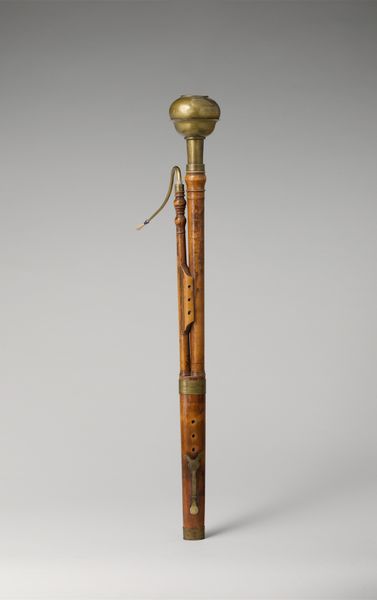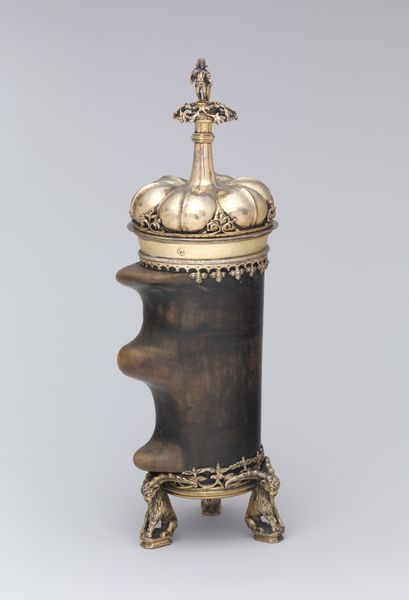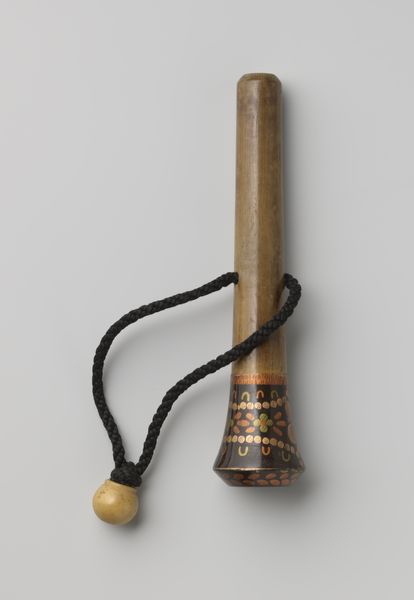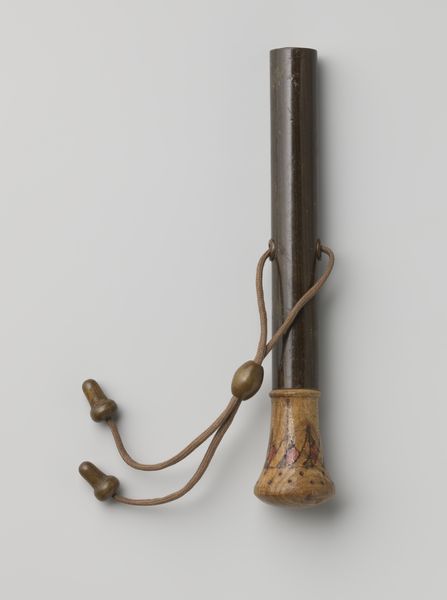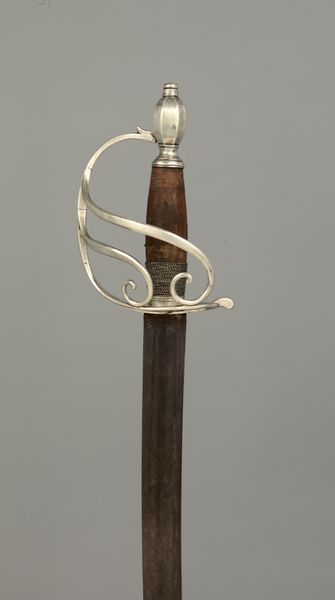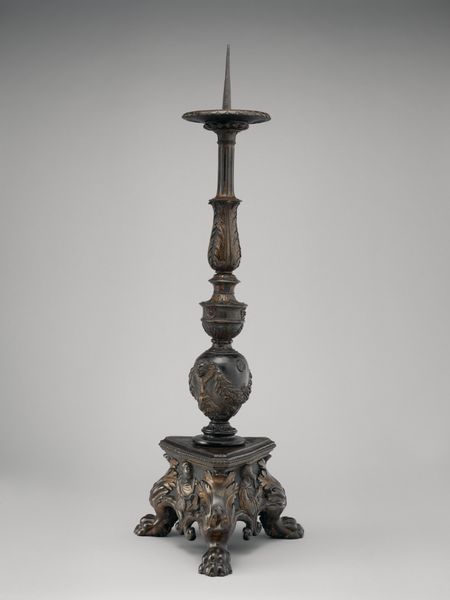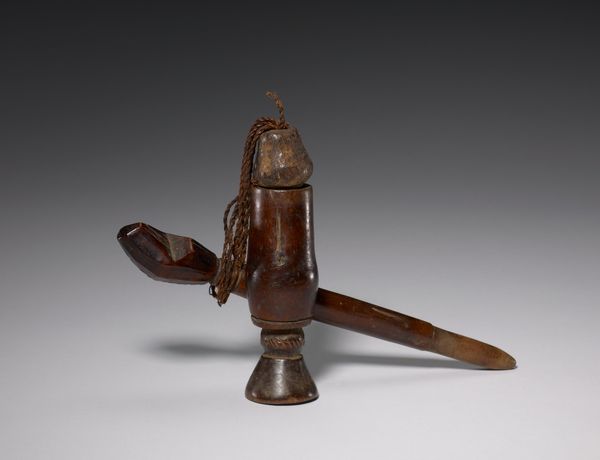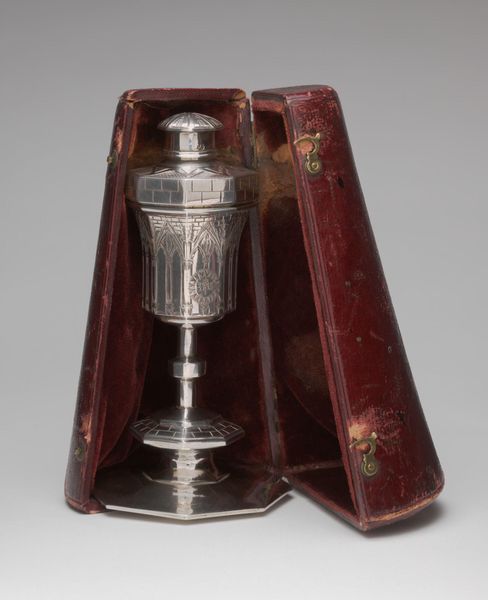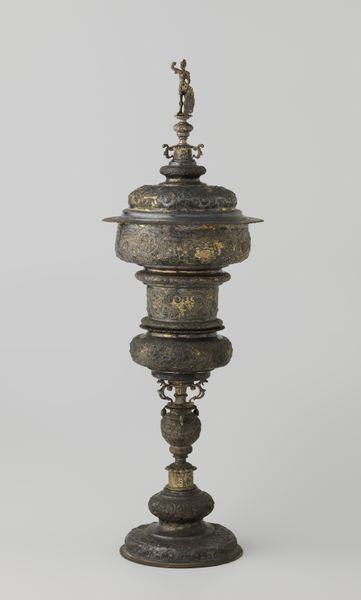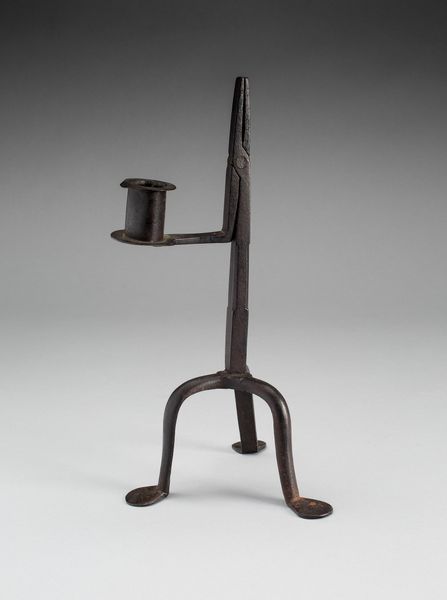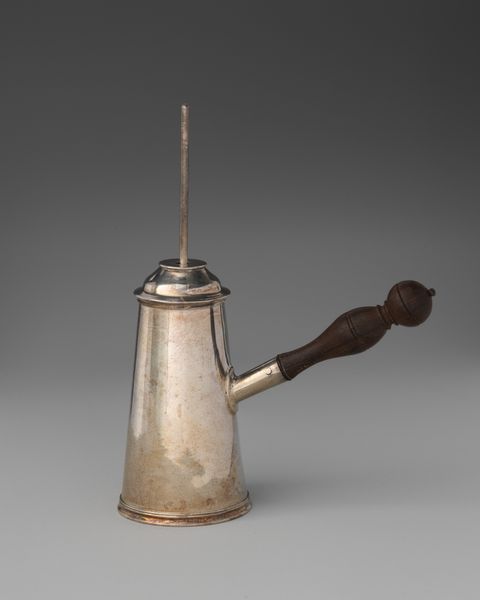
silver, sculpture, wood
#
silver
#
sculpture
#
asian-art
#
sculpture
#
wood
Dimensions: 25 x 5 1/4 in. (63.5 x 13.34 cm) (overall)
Copyright: Public Domain
Editor: Here we have an 18th or 19th century Prayer Wheel from an unknown creator, constructed with wood and silver. The detailed carving is so intriguing. What are your first impressions of this object? Curator: Well, I immediately focus on the labor invested in this piece. Think about the silverwork, the chasing, the careful assembly of materials readily available at the time. The contrast of materials, with the rich, stained wood forming a sturdy base, supporting a precious silver cylinder. The economic implications alone suggest significant patronage. How do the material choices speak to the function of the piece? Editor: I guess the contrast makes sense... You have this earthly, grounded base in wood, and the heavenly, sacred aspect embodied in the gleaming silver. Is the silver sourced locally or is it a trade commodity? Curator: Excellent question. Sourcing is key. Trade routes dictated availability and influenced stylistic choices. The specific alloy of silver, the tooling marks, the type of wood—these would reveal a network of exchange. Is this made for domestic use, a temple, or for trade? Editor: It is amazing to think about it as a trade object rather than simply devotional. All the work behind the construction becomes a commodity! I never thought of a prayer wheel in those terms. Curator: Exactly! By focusing on the means of production and circulation, we begin to unpack the social context embedded within this artifact. It is not just an object of devotion; it is a material record of social relations. Editor: Thanks! Now I'll never look at religious objects the same way! Curator: I am happy to expand your material perspective.
Comments
minneapolisinstituteofart almost 2 years ago
⋮
In Tibetan Buddhism, prayer wheels are akin to rosaries, imbued with a powerful belief in the meditative repetition of sacred syllables, sounds, and prayers. A prayer surrounds the silver cylinder, while inside is a long, tightly rolled paper scroll printed with prayers and invocations. As the wheel spins with the aid of a suspended weight, the printed prayers are “sent out” with each revolution. The wheel’s rotation equates to the reading or reciting of each invocation inside the cylinder. Though Tibetans of every social rank use prayer wheels, the unusually large size of this one suggests it belonged to an upper-class individual or, more likely, a monastery.
Join the conversation
Join millions of artists and users on Artera today and experience the ultimate creative platform.
